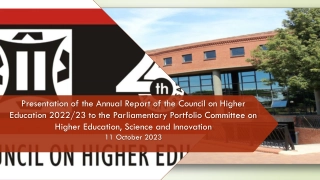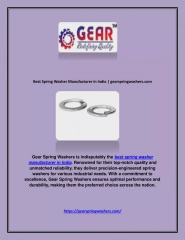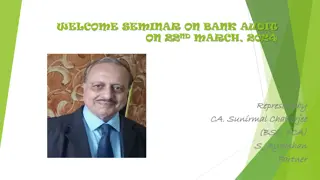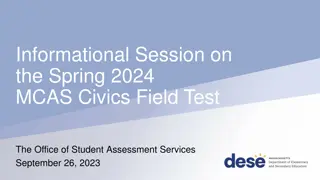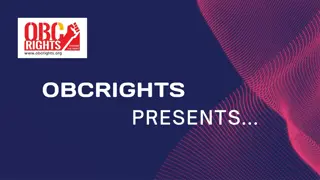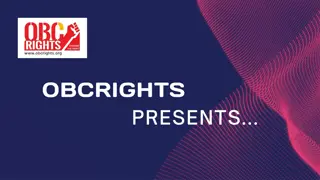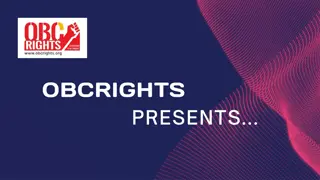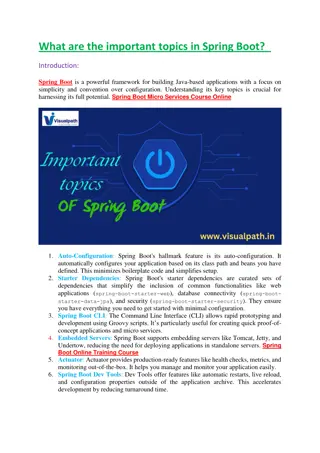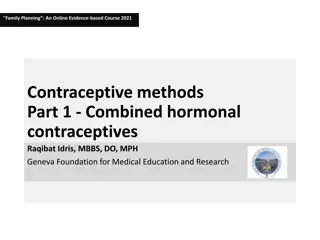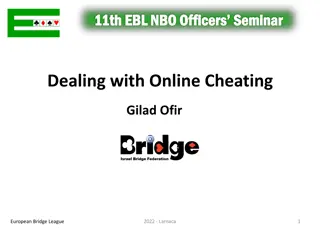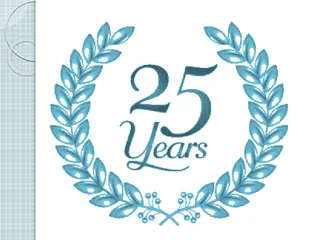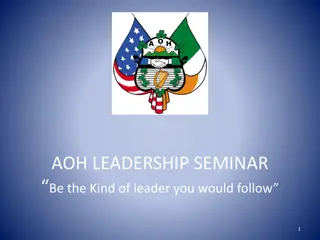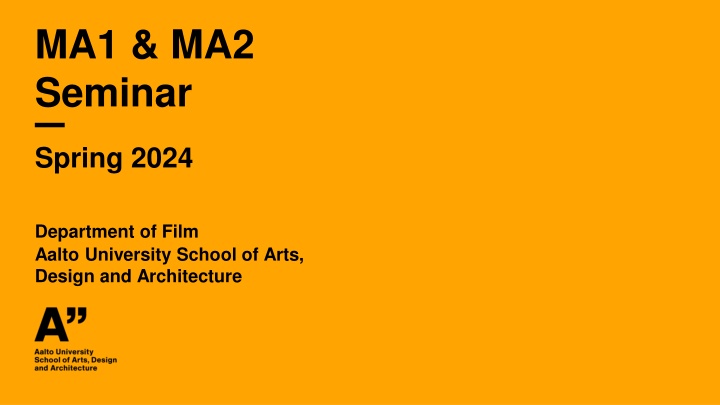
Master's Thesis Seminar at Aalto University: Connecting Artistic Practice with Writing
Explore the Master's Thesis Seminar at Aalto University, where students bridge their artistic practice with writing, through a structured course including teaching sessions, assignments, and peer collaboration. Discover the course objectives, schedule, methodology, and qualitative research methods applied to generate nuanced insights in the arts.
Download Presentation

Please find below an Image/Link to download the presentation.
The content on the website is provided AS IS for your information and personal use only. It may not be sold, licensed, or shared on other websites without obtaining consent from the author. If you encounter any issues during the download, it is possible that the publisher has removed the file from their server.
You are allowed to download the files provided on this website for personal or commercial use, subject to the condition that they are used lawfully. All files are the property of their respective owners.
The content on the website is provided AS IS for your information and personal use only. It may not be sold, licensed, or shared on other websites without obtaining consent from the author.
E N D
Presentation Transcript
MA1 & MA2 Seminar Spring 2024 Department of Film Aalto University School of Arts, Design and Architecture
Course Objective & Info The Master s Thesis Seminar is course that supports students to begin making connections between their artistic practice and the process of writing. T m kurssi tukee opiskelijoita luomaan yhteyksi taiteellisen praktiikan ja kirjoittamisen prosessin v lill . Kurssi koostuu l hiopetuksesta, teht vist ja vertaisty skentelyst The course is organised in contact teaching sessions, combined with assignments and peer work. Otamme mielell mme palautetta vastaan l hiopetuskerroilla ja niiden v lill You are invited to share feedback in between the sessions. Suositellut yhteydenpitokanavat: Aalto email & MyCourses Preferred channels of communication: Aalto email & MyCourses
Course Schedule 11.3.2024 F101 Ryhm opetus - F101 V re 25.3.2024 Combined session with MA1 & MA2 Q202 Ryhm opetus - Q202 V re 15.4.2024 MA2 (NOW in Sisu!) 22.4.2024 MA2 15.00-19.00 Student presentations - Q202 Ryhm opetus - Q202 V re 29.4.2024 MA1 Q101 Ryhm opetus - Q101 V re 13.5.2024 MA2 Q202 Ryhm opetus - Q202 V re 20.5.2024 MA2 15.00-19.00 Student presentations - M202 Ryhm opetus - M202 V re The space is subject to change. Time: 15.00-17.00 unless other info
Schedule of the day / Aikataulu 15:00-15:30 Student presentation and discussion 15:30-15:40 Break / Tauko 15:40-16:10 Research methods / Tutkimusmenetelm t 16:10-17:00 Exercise and sharing / Harjoite ja purku
Methodology and Method A research methodology is the systematic approach adopted by students, researchers, or scholars to conduct their study (research). It provides a structured framework for addressing a research problem, guiding the formulation of appropriate research questions, data collection methods, and techniques of analysis. There are different types of research methods which use different tools for data collection.
Qualitative Research / Laadulliset menetelmt Qualitative data is non-numeric information, such as in-depth interview transcripts, diaries, anthropological field notes, answers to open-ended survey questions, audio-visual recordings and images.(https://ukdataservice.ac.uk/learning-hub/qualitative-data/) In the arts, qualitative research methods such as interviews, (auto)ethnographic observations, case studies, narrative inquiries, and content analyses can be used to generate nuanced, and context-specific insights into artistic practices, expressions, and aesthetic experiences.
Figure: Characteristics of Qualitative Research by Bunmi Malau-Aduli and Faith Alele (https://jcu.pressbooks.pub/intro-res- methods-health/chapter/4-2-definitions-and-characteristics-of-qualitative-research/)
Qualitative Research Data Collection Action Research: simultaneously investigating and solving an issue, seeks transformative change Artistic Research (or Arts-Based Research): using artistic methods to express and understand something Interviews: in-depth interactions between the research(s) and the participant(s) usually focused on experiences, perspectives, and opinions Autoethnography: connecting the author s personal experiences to wider political and societal phenomena, meanings and understanding Case study Research: exploring in-depth a program, event, activity, process, or one or more participants Internet Research: using internet-based resources and information
Qualitative Research Data Collection Documentary Research: using official documents or personal documents as a source \ Ethnography: the description of peoples and cultures who interact over time Focus Groups: the technique of using group interactions to collect data Indigenous Research: Research in any field or discipline that is conducted by, grounded in or engaged with First Nations, Inuit, M tis or other Indigenous nations, communities, societies or individuals, and their wisdom, cultures, experiences or knowledge systems, as expressed in their dynamic forms, past and present. (https://research.ucalgary.ca/engage-research/indigenous-research-support-team/irst- resources/indigenous- research#:~:text=%E2%80%9CResearch%20in%20any%20field%20or,dynamic%20form s%2C%20past%20and%20present) Narrative Research: includes life-story research, oral history, biography, personal experience methods, and narrative inquiry
Mixed Methods / Monimenetelmisyys Mixed methods usually refers to the research approach where the researchers collect and analyse both quantitative* and qualitative data within the same study. Quantitative research gathers a range of numeric data and is used less frequently in the arts. Surveys, is a common data collection methods in quantitative methodologies, where the researchers require their respondents to choose from pre-determined responses.
Artistic research Research that defines art as its object in one way or another is generally called art research. Art can, however, also offer a premise and an aim for research: a motive, a terrain, a context and a whole range of methods. This kind of research is often referred to as artistic research . It is not a counter concept of scientific research , but instead, its primary aim is to describe the framework of research in a way that does not simply reduce art to the subject matter of a study. Artistic research is typically carried out by experts in various fields of art, i.e. artists or artist-researchers, to be exact, because not all art is research. Artistic activities can be considered research only when they are done within a critical community. https://www.uniarts.fi/en/general-info/what-is-artistic-research/
Taiteellinen tutkimus Taide tutkimuskohteena, objektina Taiteiden tutkimus tarkastelee taiteen eri osa-alueita, historiaa, tulkintoja ja merkityksi sek niiden suhdetta erilaisiin yhteiskunnan ja kulttuurin ilmi ihin. Taiteiden tutkimuksen opinnoissa syvennyt n laaja-alaisesti taiteiden tutkimuksen historiaan, arjen ja populaarikulttuurin kysymyksiin, taiteellisten teosten analysointi- ja tulkintamenetelmiin sek taidehallintoon. Suomalaisyliopistoissa taiteiden tutkimuksen piiriin kuuluvat muun muassa elokuva- ja televisiotutkimus, estetiikka, musiikkitiede, taidehistoria, teatteritiede ja yleinen kirjallisuustiede. Tutkiminen taiteessa, taidetta tekem ll Taiteellinen tutkimus on taiteellisen ty skentelyn ja sen pohdinnan kontekstissa teht v tutkimusta. Se tarjoaa motiivin, maaston, kontekstin ja metodien kirjon tyypillisesti eri taiteen alojen osaajien eli taiteilijoiden k ytt n. Taiteellinen tutkimus ei ole tieteellisen tutkimuksen vastak site, vaan se kuvaa ennen kaikkea kriittisess taideyhteis ss syntyvi tutkimusasetelmia. (Koneen s ti , uutiskirje 12.5.2022)
Terminological issues Artistic research Practise-based research Practice-led research https://cultureactioneurope.org/news/vienna-declaration-on-artistic-research/
Exercise Go to Aaltodoc https://aaltodoc.aalto.fi/handle/123456789/23 Select a thesis and locate its method section (not always an easy task). Analyze the method section by considering the following questions. 1. How is the overall research design described? Does the thesis employ qualitative research, mixed methods, or artistic research? This section should provide clarity on the chosen approach and its rationale.
2. How were the data collected and analyzed in the thesis? Evaluate whether the methods for data collection and analysis are clearly outlined, allowing for potential replication of the study. Pay attention to details such as participant recruitment, data collection procedures, and analytical techniques utilized. 3. Is the method section clear and concise? Assess the clarity and conciseness of the method section by examining the language used and the level of detail provided. A well-written method section should be easily understandable and sufficiently detailed to convey the research process effectively.
Examples Alaka, Akin. Finnish transnational film production: Collaboratives, production models and work culture (in English) https://aaltodoc.aalto.fi/items/dac0326e-f8fc-415f-ac18-d64799b4749d Ruuska, Jaakko. Elokuvan kolme ruumista (in Finnish) https://aaltodoc.aalto.fi/items/fed3de97-0f0b-4efd-b4ea-07da9e8be3c7 Hislop, Jo. The Ungh, knowledge through emotional, sensorial and spatial forms of bodily being (in English) https://aaltodoc.aalto.fi/items/f953e607-3f30-40dd-b98d-d932e1c7376f Sorri, Salla. Autenttisuudesta elokuvassa (in Finnish) https://aaltodoc.aalto.fi/server/api/core/bitstreams/cc686c64-c4b1-4949-a7ec- 429c666556c7/content
Additional info Timeline MA Thesis spring 2024 https://www.aalto.fi/en/programmes/masters-programme-in-art- and-media/thesis Master s thesis guide https://mycourses.aalto.fi/pluginfile.php/1504906/mod_resource/co ntent/2/Aalto%20ARTS%20Master%20Thesis%20Guide%202020%2 0v.2.pdf

